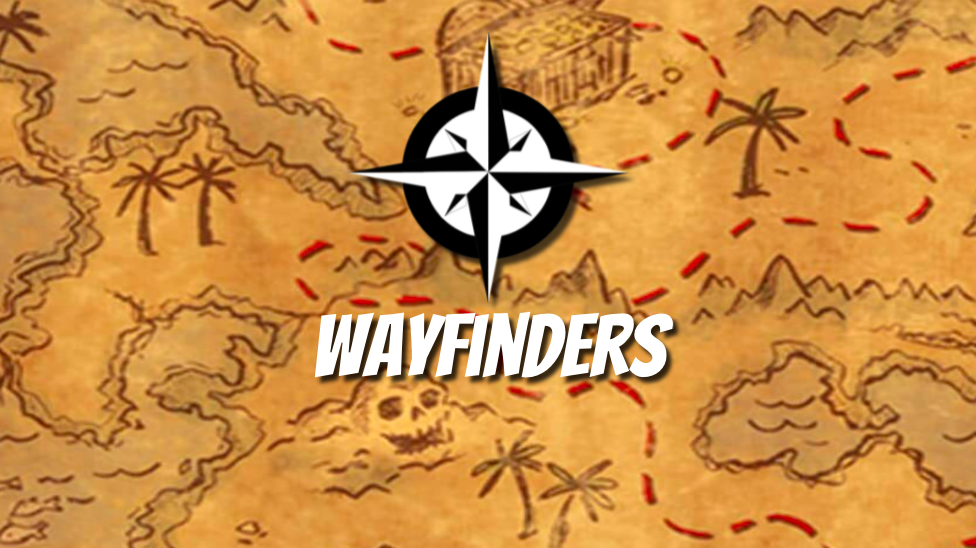
Overview: Create a proof of concept design that solves a significant pain point for a large population of users.
Problem Description: Teachers are expected to provide individualized instruction for students with varying academic and personal engagement degrees. Current tools are either unengaging, do not provide the data back results necessary to be used in a classroom, or are expensive and must be paid for by the teacher. Creating a community-driven, module-based educational game site can keep costs down and provide teachers with a powerful tool to encourage self-driven, individualized student education.
My Role: UX/UI Research and Design, Interviewing, UX Writing, Wireframing, Brand Creation Prototyping, User Testing.
Collaborator: Harley Garza
Time Frame: 3 Weeks
Competitive analysis revealed several limiting factors in current web-based tools:
They are expensive and often unaffordable without district help.
Gamified tools, for the lack of data-backed results, are often overlooked in favor of less engaging options.
They offer less flexibility and adaptability in an era of school choice where class rosters can change quarterly.
They often cannot compete with technological distractions.
Interviews indicated a desire for access to tools that could allow teachers to offer alternative instructional or assessment methods to students during their “downtime”. Downtime being when the students have a chance to engage in self-directed educational practice.
Significant Quotes
“... unless the district buys into a program, it's almost unaffordable or we only get the basic version [because] it's free.”
“So they like games, they're engaged by games, and I think that would make that better. So some type of competitive feature would make it better for them or even just like making it a game.”
This meant there was an opportunity to create a tool that could justify district-wide adoption by providing:
Data tracking on the individual student level.
Flexible, adaptable standard content that would adjust to the student achievement level.
Community-generated content to reduce the cost and provide alternative assessment and instruction.
A gamified tool to increase competition and engagement among students.
User Persona:
It became clear the users were teachers who wanted to provide discovery, independence, and curiosity to their students, but were unable to with the current toolsets available to them. At least not all in one tool.
Additionally, it was clear that some of the more powerful tools available also required teachers to learn new tools in order to interface with the websites on an easier level.
It was decided Wayfnders would allow teachers to use tools such as excel or google spreadsheets in order to create their custom question sets. Our study of the tool Treejack over the course of this project helped to inspire that choice.
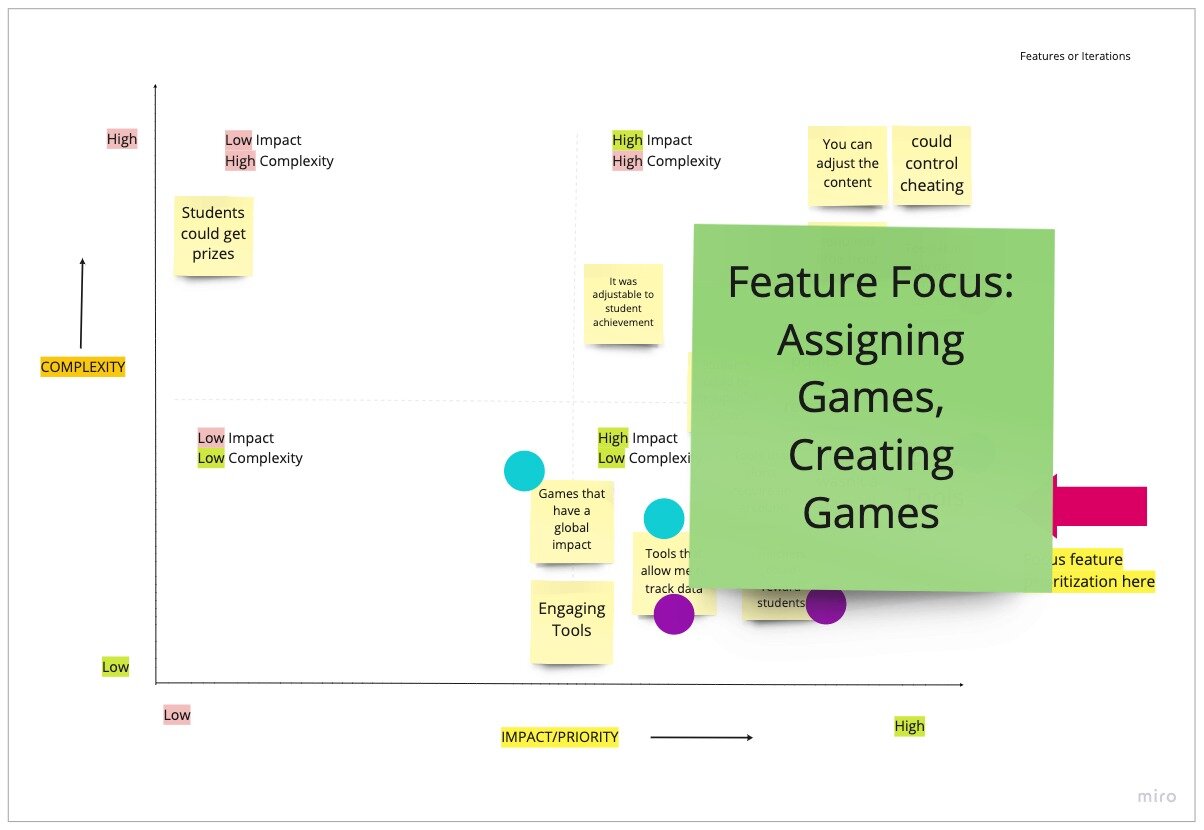
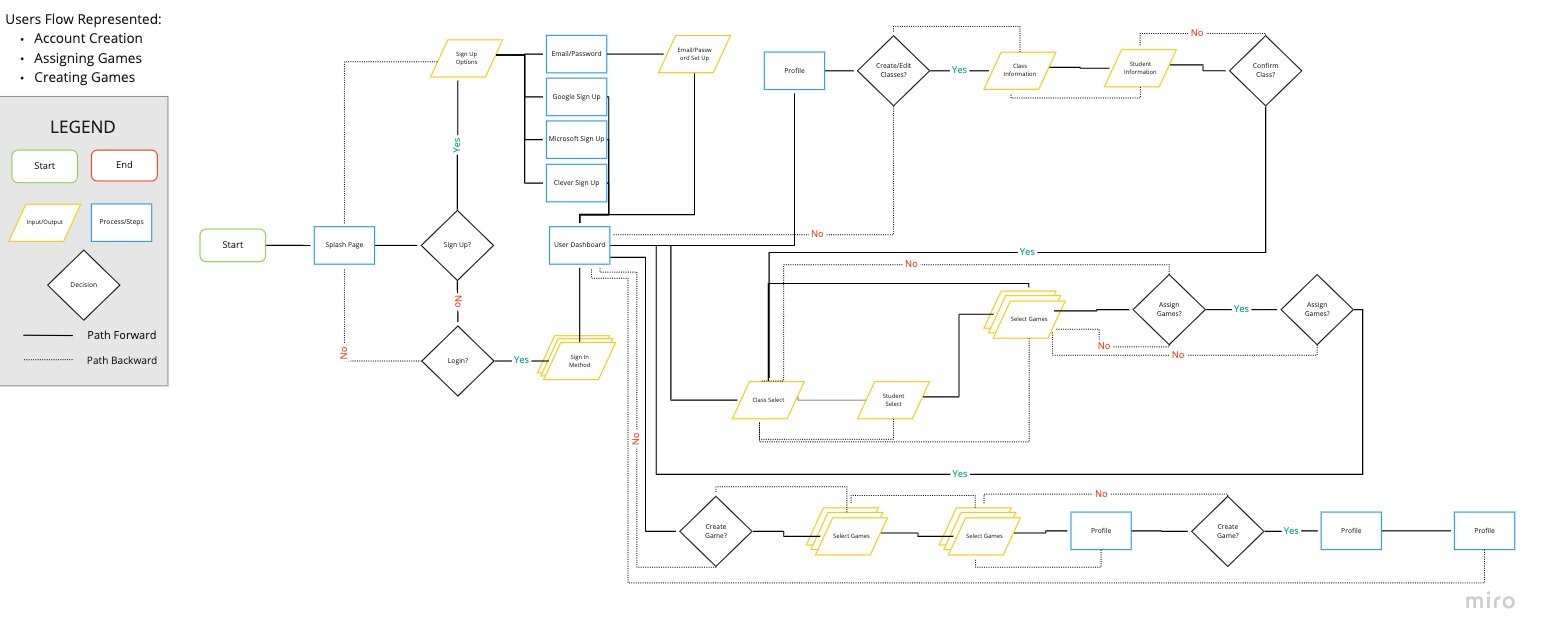
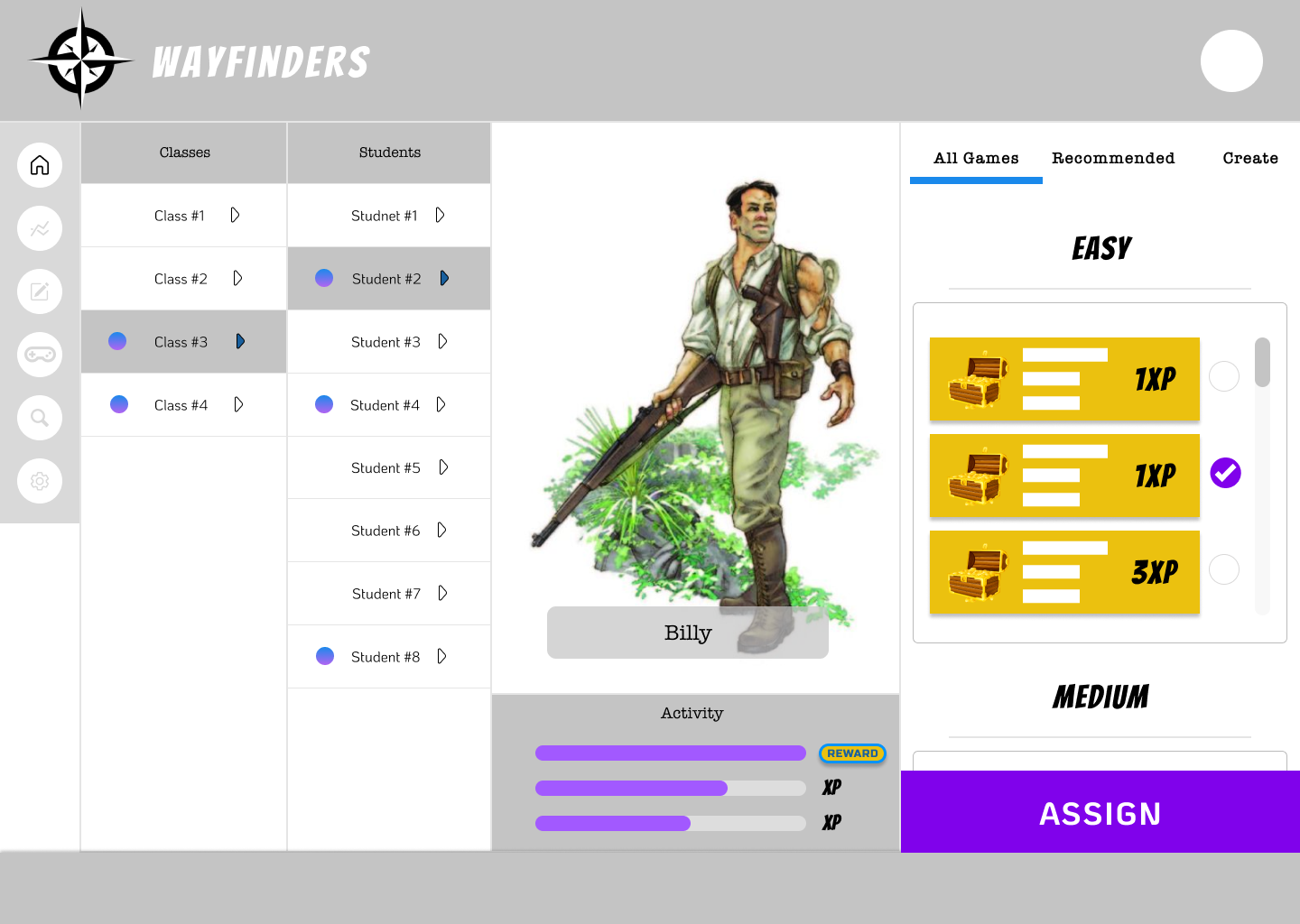
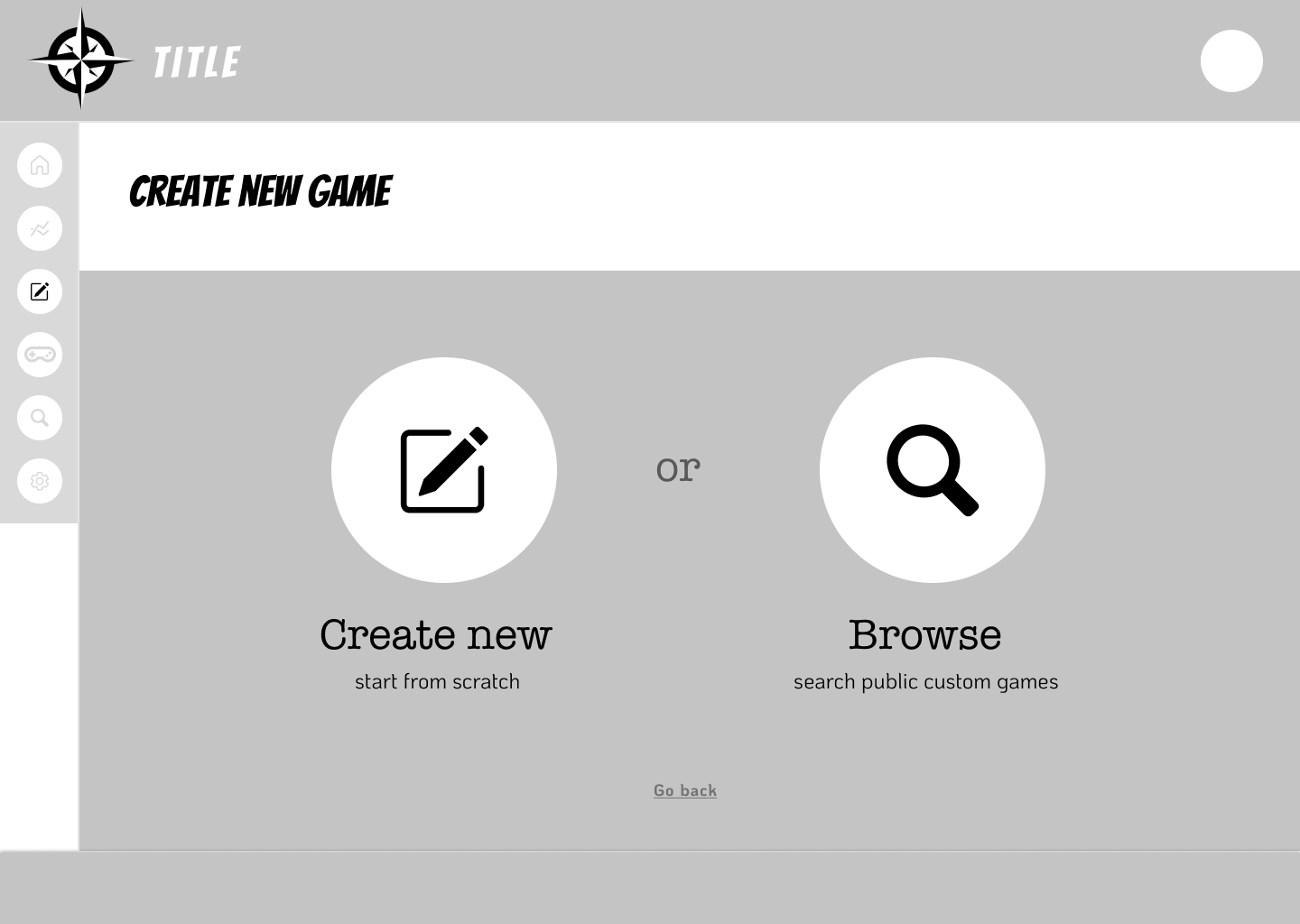
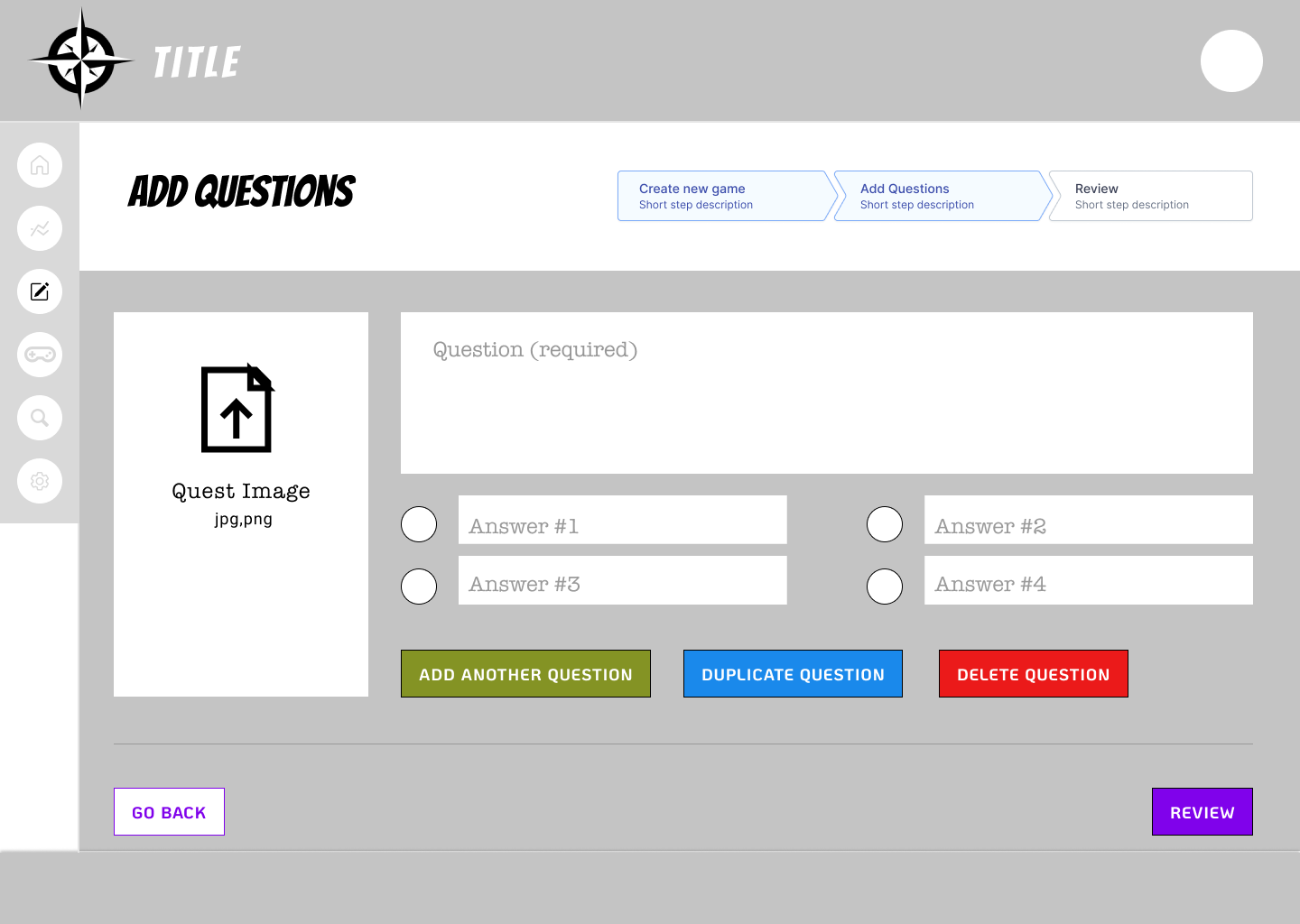
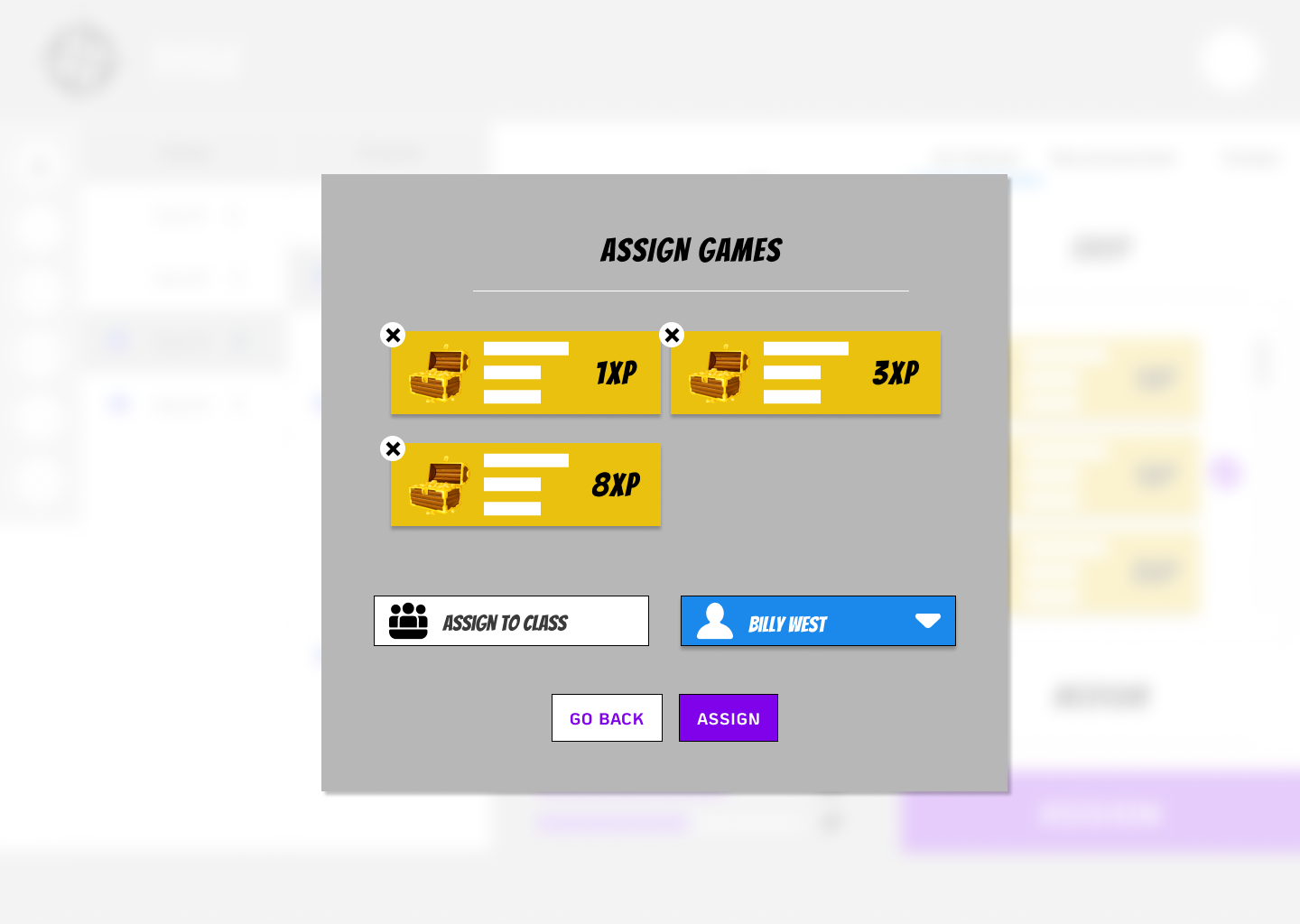
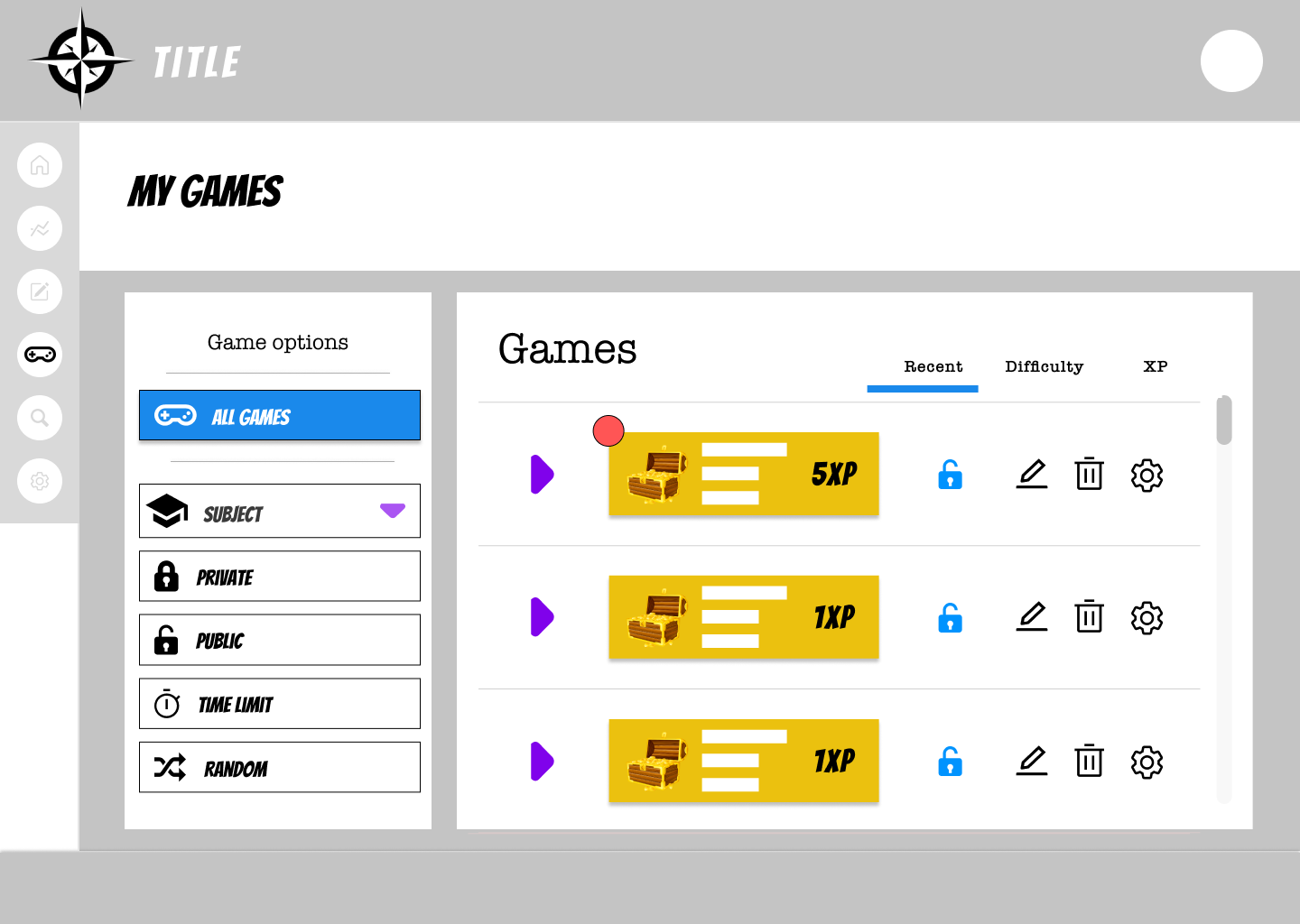
With the research done, the bulk of the time spent on the proof of concept was done on the user flows for assigning and creating games. The goal was to provide teachers with clear, intuitive controls that would provide them the most options for providing sound academic content for their students.
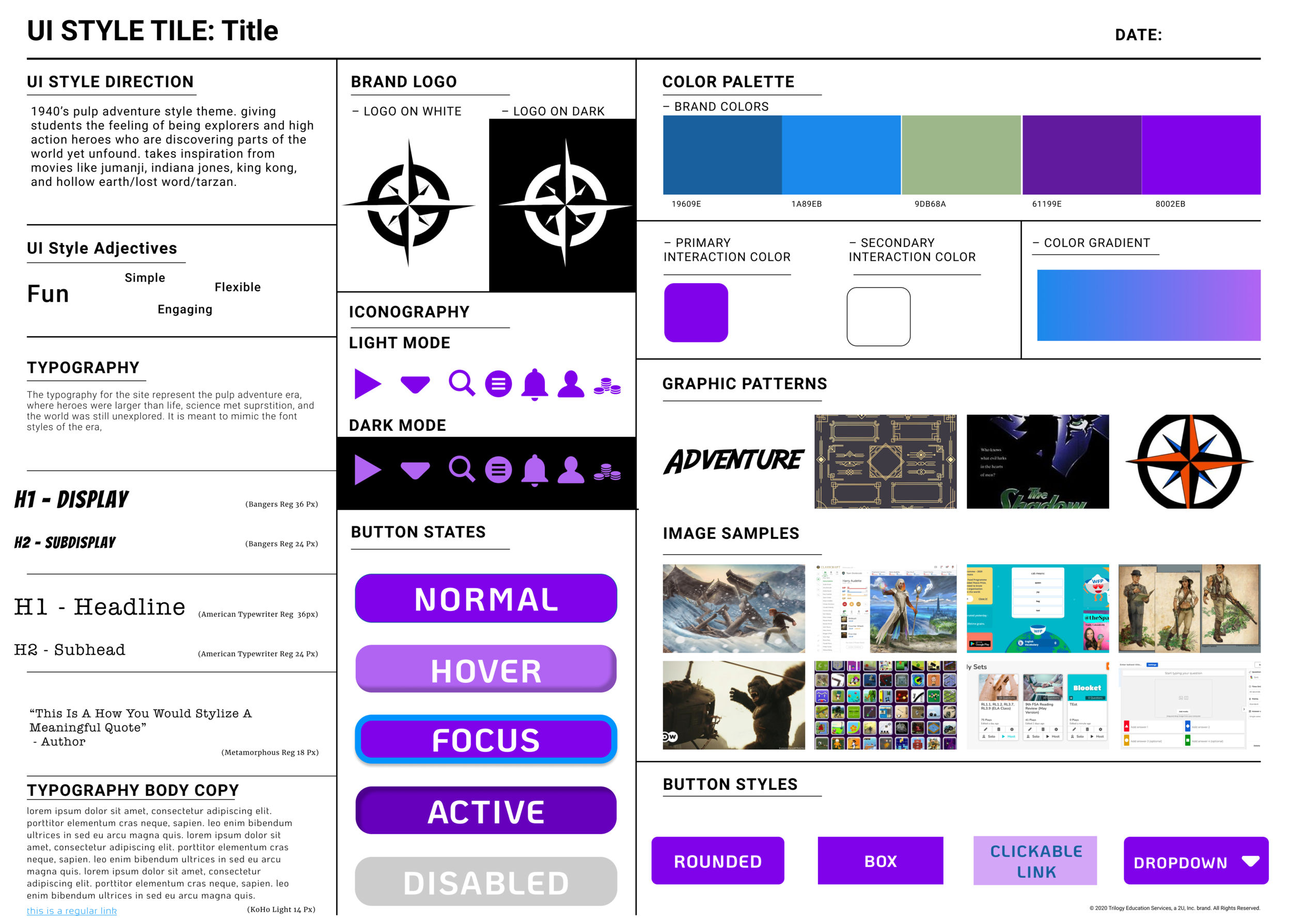



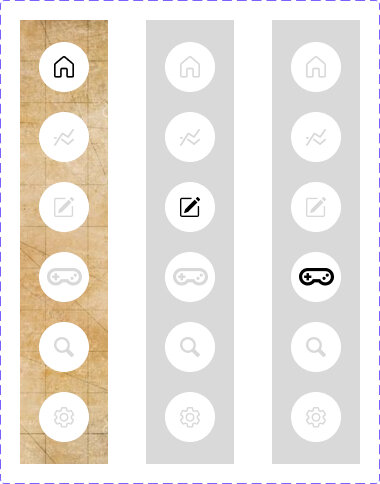
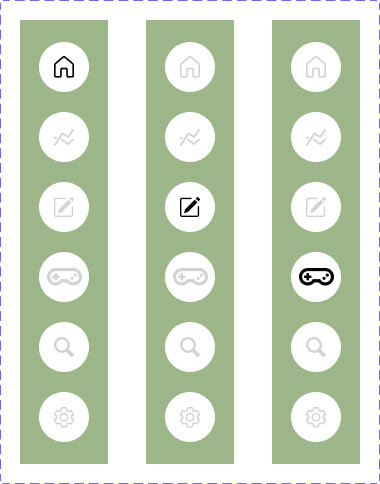
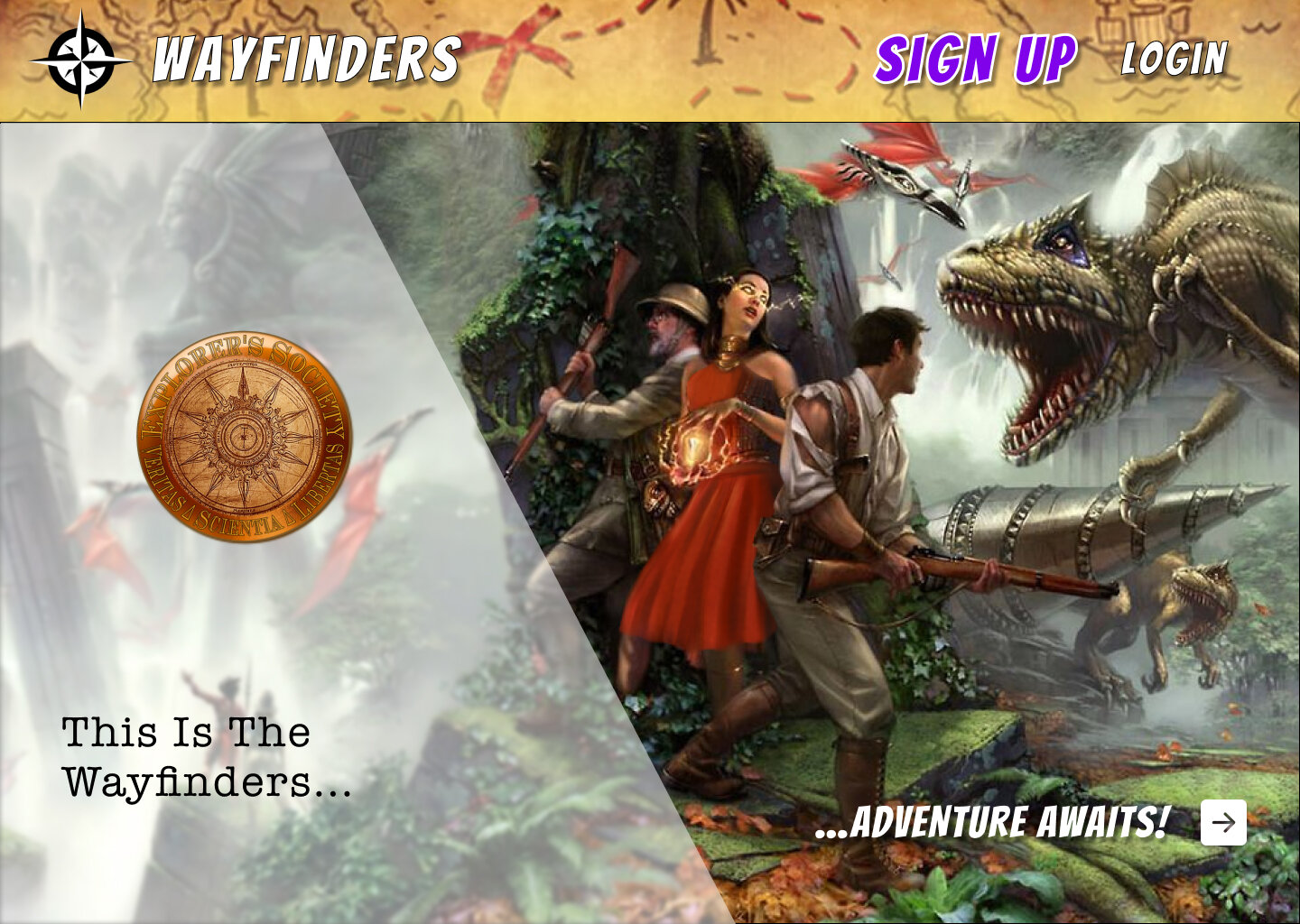
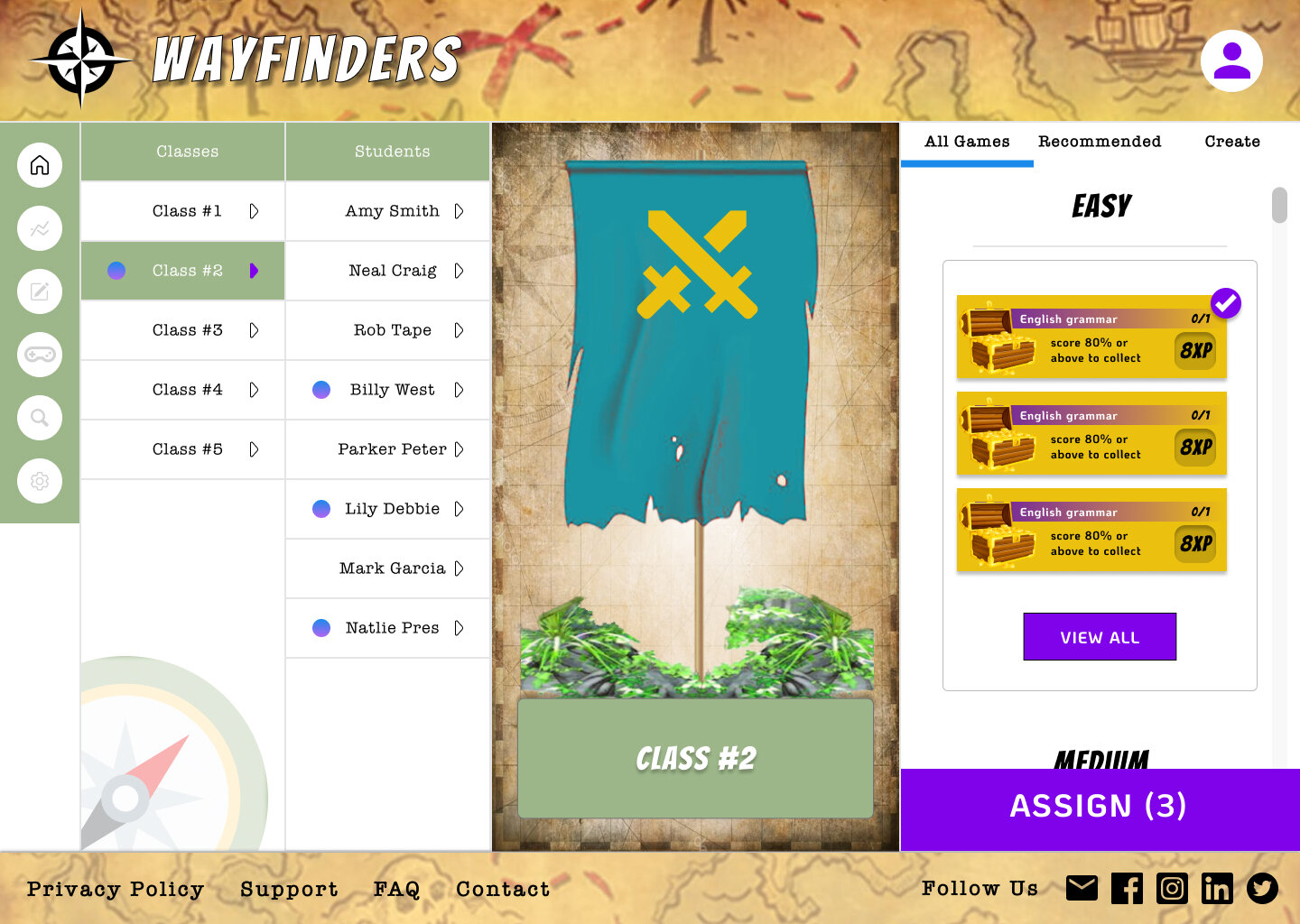
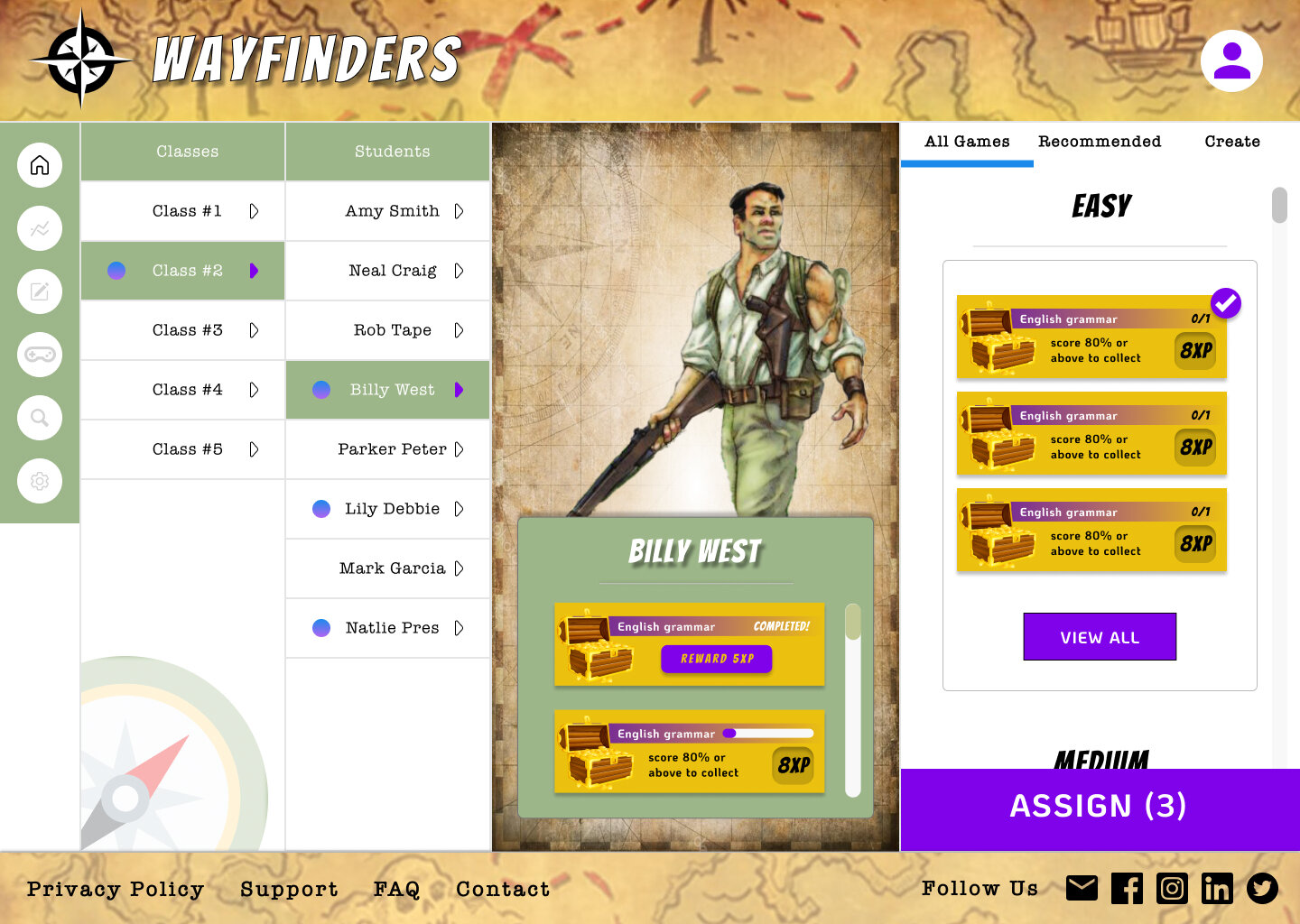
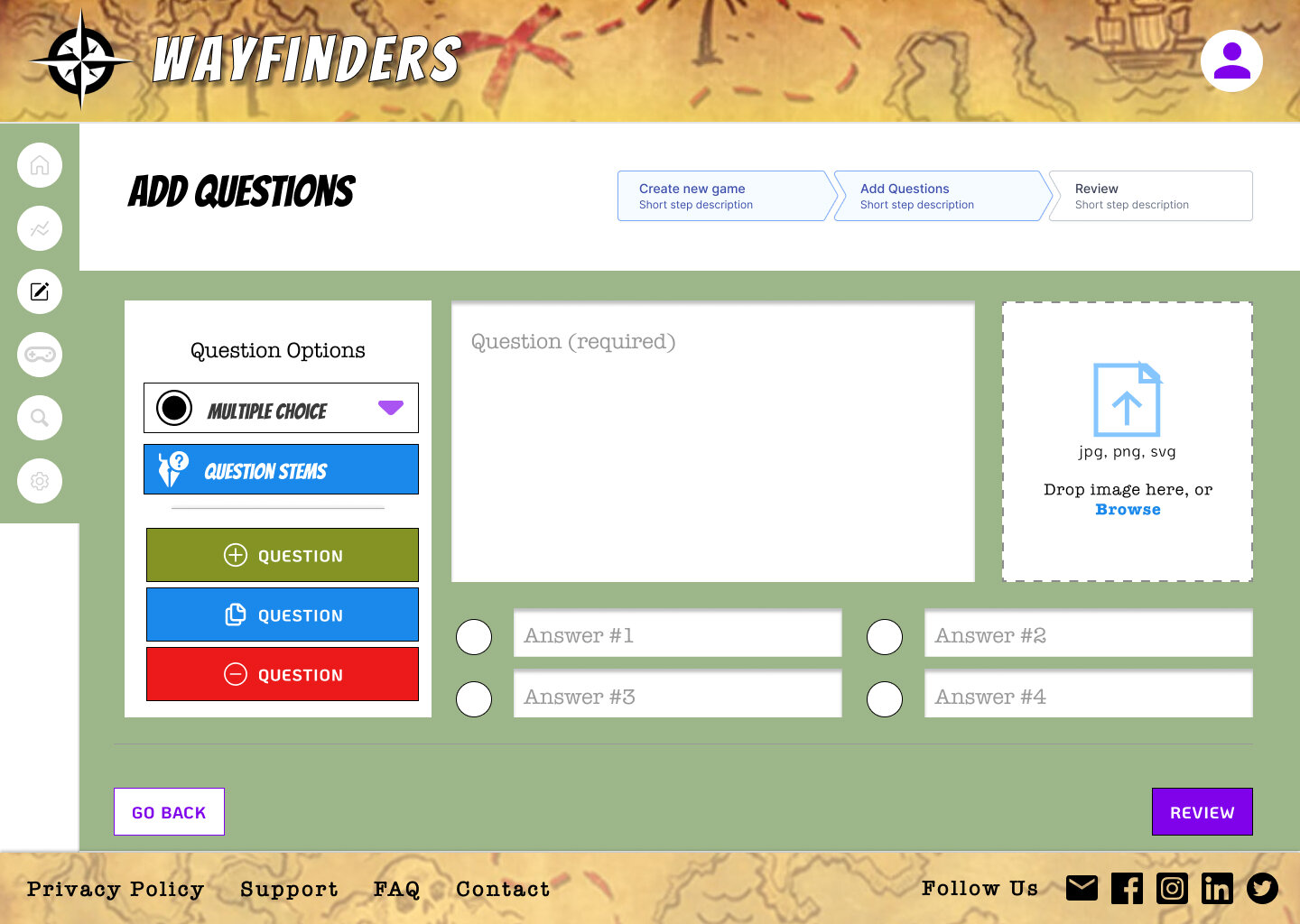
The transition to hi-fidelity came after user testing and feedback. The full styletile was created around the the pulp adventure stylings of the 1920s-40s, the work of Edgar Rice Burroughs (Tarzan, Hollow Earth, John Carter of Mars, etc.), Indiana Jones, and Jumanji.
Iterations to Wayfinders also took place over this time, with a redesign of the question creation screen to allow for multiple question types and a database of question stems aligned to the standards the teacher would need.
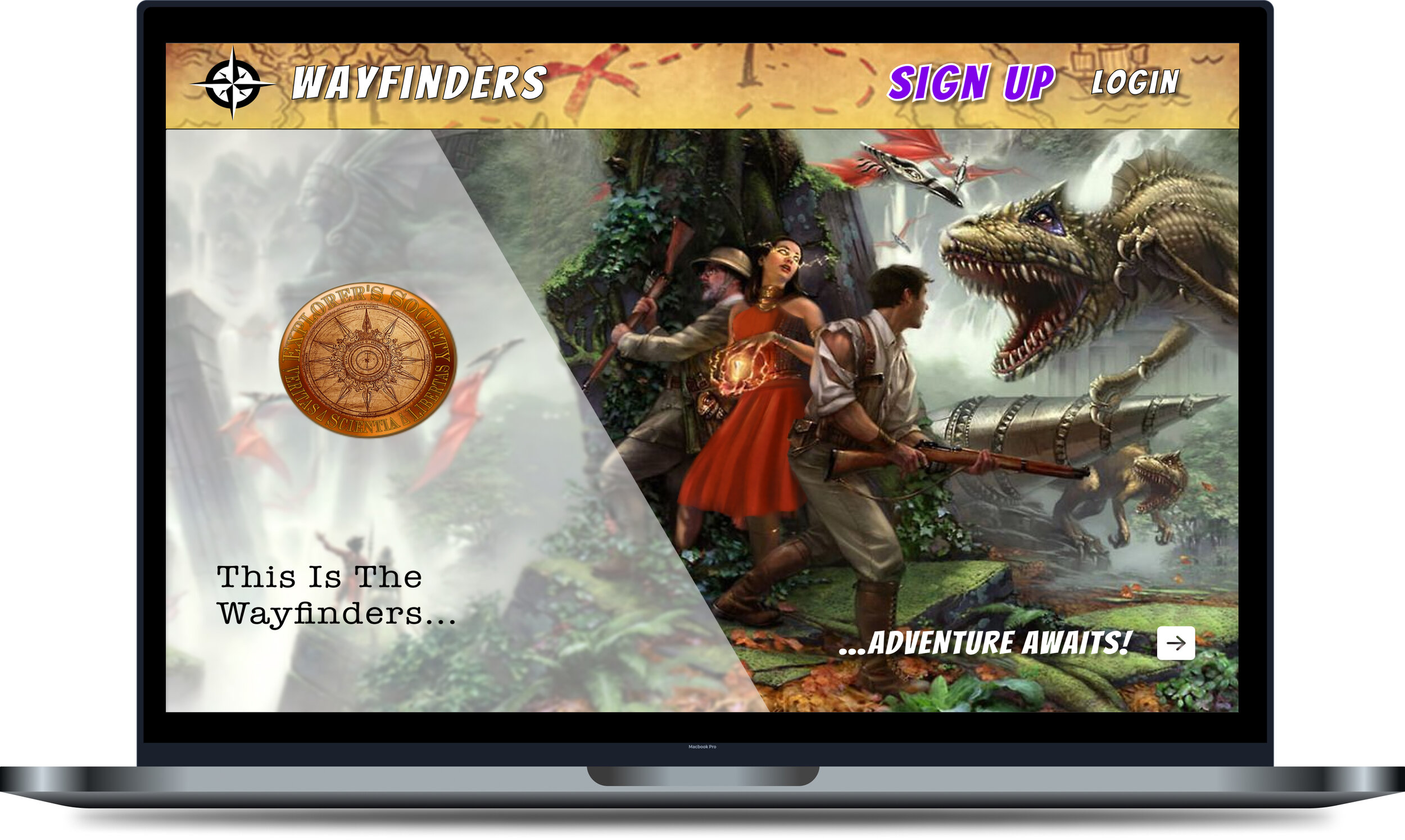

This was a passion project of mine. As a former teacher, I know what limitations and expectations are put on teachers. I know the educational process, and I am aware of how powerful a tool technology can be. I would love to build out the full user flows and Hi-Fi mockups for teachers, students, and even districts. I believe that a community-driven content model can make it variable, adaptable, and affordable to use in the classroom.
Positive Feedback
Entered into Design Contests. Judges had a positive feedback to the design.
Most Significant Quote: "Brilliant idea and amazing UI/UX. I think that the system may need a 'joyride' tutorial for new teachers - simply because there seems to be so much functionality but overall the UI felt intuitive. Beautiful job with the pitch - very engaging."





